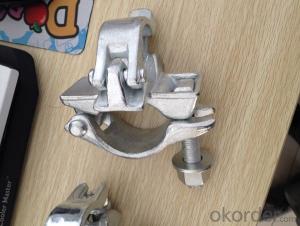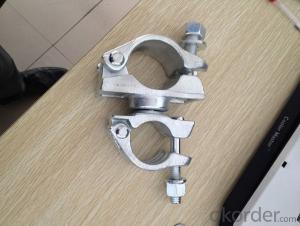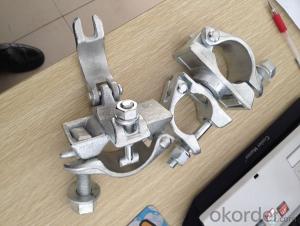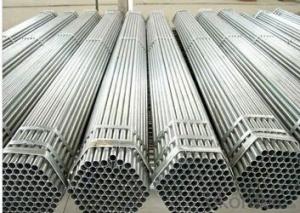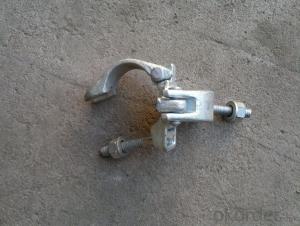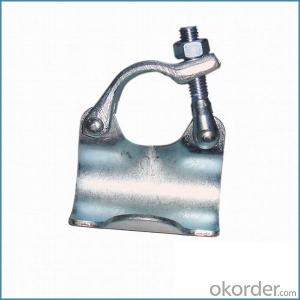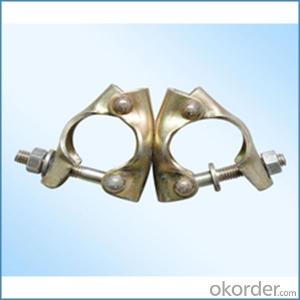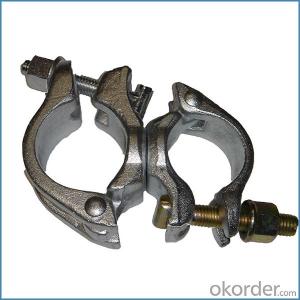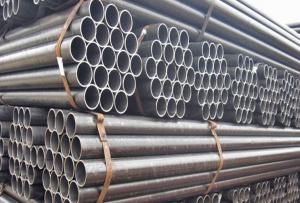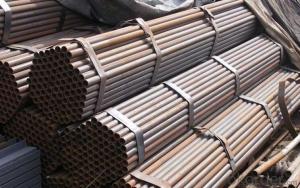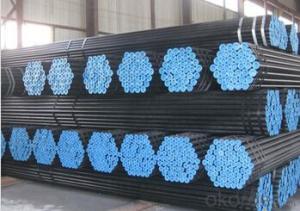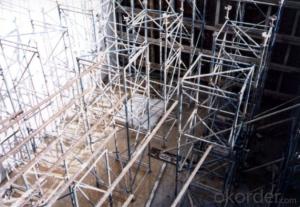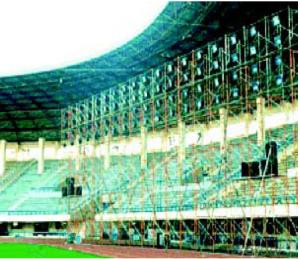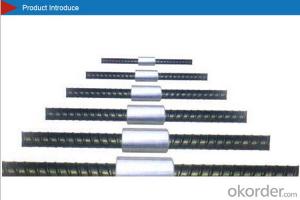scaffolding forged irregualr coupler
- Loading Port:
- Nanjing
- Payment Terms:
- TT OR LC
- Min Order Qty:
- 1000 pc
- Supply Capability:
- 30000 pc/month
OKorder Service Pledge
OKorder Financial Service
You Might Also Like
Drop forged irregualr coupler
1.size:48.3mm×63mm
2.weight:1.8kg
3.Material: Q235/225/345
4.surface :self-color / zinc plate / electro galvanized / HDG or painted
5.Standard: EN74 ,BS1139
6.Anti-rust ,skidproof ,high breaking strength
7.Durable finish, reliability, low maintenance, corrosion resistance, robust construction and high tensile strength
8. OEM serice is available
SPECIFICATIONS:
1 MATERIAL:Q235
2 SWIVEL AND DOULE RIGHT ANGLE COUPLER
3 DROP FORGED AND PRESSED
4 BS1139 AND EN74 STANDARD
5 SIZE:48.3*48.3MM
6 PRESSED AND DROP FORED SWIVEL AND FIXED COUPLER/PUTLOG COUPLER/SLEEVE COUPLER/INNER CONNECTOR/BEAM COUPLER ETC.
Pressed swivel coupler 1.02kg galvanized/ hot dipped galvanized
Pressed fixed coupler 0.85kg galvanized / hot dipped galvanized
DROP FORGED SWIVEL COUPLER 0.98kg galvanized / hot dipped galvanized
DROP FORGED SWIVEL COUPLER 1.12kg
DROP FORGED PUT LOG COUPLER 0.62KG galvanized / hot dipped galvanized
SLEEVE COUPLER 1.0KG galvanized / hot dipped galvanized
DROP FORGED FIXED BEAM COUPLER 1.45KG galvanized / hot dipped galvanized
DROP FORGED SWIVEL GRINDER COUPLER 1.5KG galvanized / hot dipped galvanized
7 SUITABLE FOR PIPE DIAMETER:48MM,48.3MM,60.3MM
8 Payment terms:30%TT deposit, balance against BL copy or LC at sight
9 FOB .CIF.C&F ,CFR acceptable
10 Delivery time;20-30days after receiving deposit
- Q:Are there any specific guidelines for using steel tube couplers in scaffolding systems that need to accommodate different shapes or configurations?
- Yes, there are specific guidelines for using steel tube couplers in scaffolding systems that need to accommodate different shapes or configurations. These guidelines typically include ensuring that the couplers are properly sized and designed to accommodate the specific shape or configuration of the scaffolding. It is important to follow the manufacturer's instructions for installation and usage to ensure the safety and stability of the scaffolding system. Additionally, regular inspections and maintenance of the couplers are necessary to identify any wear or damage that may affect their performance.
- Q:How do steel tube couplers facilitate easy assembly and disassembly of scaffolding structures?
- Steel tube couplers facilitate easy assembly and disassembly of scaffolding structures by providing a secure and efficient connection between the tubes. These couplers are designed to fit snugly around the tubes, allowing for quick and simple attachment without the need for additional tools or hardware. This ensures that the scaffolding can be assembled and disassembled rapidly, saving time and effort. Additionally, the strong and durable nature of steel tube couplers ensures the stability and safety of the scaffolding structure during use.
- Q:Are there any guidelines for the safe storage and transportation of steel tube couplers?
- Yes, there are guidelines for the safe storage and transportation of steel tube couplers. These guidelines aim to ensure the integrity and safety of the couplers during storage and transportation, minimizing the risk of damage or accidents. 1. Storage: Steel tube couplers should be stored in a dry, well-ventilated area to prevent exposure to moisture, which can cause corrosion. They should be kept away from direct sunlight and extreme temperatures. Couplers should be stored in an organized manner, with clear labeling to facilitate easy identification and access. 2. Handling: When handling steel tube couplers, care should be taken to avoid dropping or mishandling, as this can cause damage or deformities. Proper lifting equipment, such as cranes or forklifts, should be used to ensure safe and secure transportation. The use of appropriate personal protective equipment (PPE), such as gloves, helmets, and safety shoes, is also recommended. 3. Transportation: During transportation, steel tube couplers should be secured to prevent movement or shifting. They should be properly packaged and stacked to avoid any potential damage, such as scratches or dents. It is advisable to use suitable padding or cushioning material to provide additional protection. Couplers should be loaded and unloaded carefully, ensuring they are not subjected to excessive force or impact. 4. Inspection: Regular inspections should be conducted to check for any signs of damage, such as cracks, bends, or rust. Damaged couplers should be removed from service immediately and replaced with new ones to ensure safety. 5. Documentation: It is important to maintain proper documentation throughout the storage and transportation process. This includes keeping records of the couplers' origin, quantity, and condition. This documentation can be helpful in tracking and managing inventory, as well as for insurance purposes in case of any damage or loss. Following these guidelines will help ensure the safe storage and transportation of steel tube couplers, reducing the risk of accidents and maintaining the quality and integrity of the couplers.
- Q:Are steel tube couplers suitable for scaffolding projects requiring frequent reassembly or modification?
- Steel tube couplers are a perfect fit for scaffolding projects that require frequent reassembly or modification. They are widely utilized in construction scaffolding due to their robustness and longevity. These couplers make assembly and disassembly a breeze, making them an excellent choice for projects that necessitate regular changes or adjustments. They can be swiftly and securely connected to steel tubes, creating a dependable and steady structure. Furthermore, steel tube couplers can withstand heavy loads and adverse weather conditions, guaranteeing the safety and stability of the scaffolding. All in all, when it comes to scaffolding projects that require frequent reassembly or modification, steel tube couplers are the top choice.
- Q:The one where the people are in a meeting and they here a noise, then look around to see a bundle of money on a scaffold. PLZ tell me it's driving me crazy!
- It was an old 80's song - Somebody's watching me - Rockwell
- Q:What is the typical maintenance routine for steel tube couplers in scaffolding?
- The typical maintenance routine for steel tube couplers in scaffolding involves a series of steps to ensure their safe and efficient use. Here is a general outline of the maintenance routine: 1. Inspection: Regularly inspect all steel tube couplers for signs of wear, damage, or corrosion. Look for cracks, bends, or any other abnormalities that may compromise their structural integrity. 2. Cleaning: Clean the couplers regularly to remove dirt, debris, or other substances that may accumulate on their surfaces. Use a brush or a cloth and mild detergent to gently scrub away any grime or rust. 3. Lubrication: Apply a suitable lubricant to the moving parts of the couplers, such as the bolts, nuts, or swivels. This will help prevent rusting and ensure smooth operation. 4. Tightening: Check the tightness of the couplers regularly, especially after assembling or disassembling the scaffolding. Ensure that all bolts and nuts are securely fastened to maintain the stability of the structure. 5. Replacement: If any couplers are found to be severely damaged, cracked, or unable to securely hold the tubes, they should be replaced immediately. Do not compromise safety by using faulty or weakened couplers. 6. Storage: Properly store the steel tube couplers when not in use. Keep them in a dry and well-ventilated area to avoid moisture buildup, which can lead to corrosion. 7. Training: Ensure that all workers who handle scaffolding and couplers are properly trained in their maintenance and safe usage. This will help prevent accidents and ensure the longevity of the equipment. By following this maintenance routine, you can ensure that the steel tube couplers in your scaffolding remain in good condition, providing a safe and reliable support structure for construction or other activities.
- Q:Are steel tube couplers easy to assemble and disassemble in scaffolding?
- Yes, steel tube couplers are generally easy to assemble and disassemble in scaffolding. They are designed to provide a secure and reliable connection between scaffolding tubes, allowing for quick and efficient assembly and disassembly of the scaffolding system. The couplers are typically lightweight and compact, making them easy to handle and manipulate during the construction process. Additionally, they are designed with a simple locking mechanism that ensures a tight and secure connection, providing stability and safety to the scaffolding structure. Overall, steel tube couplers are widely used in the construction industry due to their ease of use and reliability in scaffolding assembly and disassembly.
- Q:What are the potential drawbacks or limitations of using steel tube couplers in scaffolding?
- There are several potential drawbacks or limitations of using steel tube couplers in scaffolding. Firstly, steel tube couplers can be quite heavy and bulky, which can make the assembly and disassembly of scaffolding more labor-intensive and time-consuming. This can result in increased installation and dismantling costs, as well as longer project timelines. Secondly, steel tube couplers require skilled labor to properly assemble and dismantle scaffolding structures. Improper installation can lead to safety hazards and compromised stability of the scaffolding system. This means that additional training and expertise are necessary, which can add to the overall costs of using steel tube couplers. Another limitation is that steel tube couplers have limited adjustability. Once they are tightened, it can be challenging to make small adjustments or modifications to the scaffolding structure. This lack of flexibility can be inconvenient and time-consuming, especially when working in complex or irregular spaces. Moreover, steel tube couplers are susceptible to corrosion and rusting over time. Exposure to harsh weather conditions or moisture can lead to the deterioration of the couplers, affecting their strength and structural integrity. Regular inspections, maintenance, and potential replacement of corroded couplers may be necessary, adding to the maintenance costs and overall inconvenience. Lastly, steel tube couplers can be more expensive compared to alternative scaffolding systems, such as modular scaffolding or aluminum towers. The cost of purchasing or renting the couplers, along with the additional labor and maintenance expenses, can be a significant investment for construction projects. In summary, while steel tube couplers are commonly used in scaffolding due to their strength and durability, they have certain drawbacks and limitations. These include their weight, the need for skilled labor, limited adjustability, susceptibility to corrosion, and higher costs compared to other scaffolding systems.
- Q:What safety precautions should be followed when using steel tube couplers in scaffolding?
- When using steel tube couplers in scaffolding, it is crucial to follow certain safety precautions to ensure the well-being of workers and the stability of the structure. Here are some essential safety precautions that should be followed: 1. Quality Assurance: Prioritize using high-quality steel tube couplers that comply with industry standards and have been tested for strength and durability. This will help prevent any potential failures or accidents. 2. Inspection: Before using the couplers, thoroughly inspect them for any damage, such as cracks, deformities, or rust. Damaged couplers should be immediately replaced to avoid compromising the scaffolding's integrity. 3. Proper Installation: Ensure that the couplers are correctly installed following the manufacturer's instructions. This includes tightening the coupler bolts securely using the appropriate tools. Loose or improperly installed couplers can lead to instability and potential accidents. 4. Load Capacity: Consider the load capacity of the couplers and scaffolding system. Do not exceed the maximum load capacity specified by the manufacturer. Overloading can cause the couplers to fail and compromise the safety of workers. 5. Secure Connections: Make sure that all connections between tubes and couplers are secure and tight. Loose connections can lead to instability and create hazardous conditions for workers. 6. Regular Inspections: Conduct regular inspections of the scaffolding and couplers during use. Look for any signs of wear, damage, or loose connections. If any issues are identified, take immediate action to repair or replace the affected components. 7. Fall Protection: Always provide suitable fall protection equipment, such as harnesses and guardrails, in addition to using steel tube couplers. The safety of workers working at heights should never be compromised. 8. Training and Competence: Ensure that workers using steel tube couplers in scaffolding are adequately trained and competent to do so. They should understand the proper installation procedures, load capacities, and safety precautions. 9. Weather Conditions: Take into account the weather conditions when using steel tube couplers in scaffolding. Wind, rain, or other adverse weather factors can affect the stability of the structure. Extra precautions or temporary measures may be necessary to ensure safety. 10. Documentation: Maintain proper documentation of inspections, repairs, and any modifications made to the scaffolding system. This documentation can be valuable in monitoring the system's safety and identifying any issues that may arise. By following these safety precautions, you can significantly reduce the risks associated with using steel tube couplers in scaffolding and promote a safe working environment for all workers involved.
- Q:What are the common cleaning procedures for steel tube couplers?
- The common cleaning procedures for steel tube couplers typically involve a few key steps. Firstly, it is important to remove any visible dirt or debris by wiping or brushing the surface of the couplers. This can be done using a dry cloth or a soft-bristle brush. After removing the initial dirt, the next step is to clean the couplers using a mild detergent or cleaning solution. This solution can be mixed with water according to the manufacturer's instructions. The couplers should be carefully wiped or scrubbed using a cloth or brush soaked in the cleaning solution. Once the couplers have been thoroughly cleaned, it is essential to rinse them with clean water to remove any remaining soap or detergent residue. This can be done by using a hose or running water over the couplers. It is important to ensure that all soap or detergent is completely washed away to prevent any potential damage or corrosion to the steel surface. After rinsing, it is crucial to dry the couplers thoroughly to prevent any moisture from causing rust or corrosion. This can be done by using a clean, dry cloth or by allowing the couplers to air dry naturally. In some cases, it may be necessary to disinfect the steel tube couplers, especially if they are being used in environments where hygiene is crucial, such as in medical or food processing facilities. This can be done by using a disinfectant solution specifically designed for use on steel surfaces. The disinfectant should be applied according to the manufacturer's instructions and rinsed off thoroughly with clean water after the recommended contact time. Overall, the common cleaning procedures for steel tube couplers involve removing dirt and debris, cleaning with a mild detergent, rinsing with clean water, drying thoroughly, and potentially disinfecting if required. It is important to follow the manufacturer's instructions and to use appropriate cleaning products to ensure the longevity and cleanliness of the steel tube couplers.
1. Manufacturer Overview |
|
|---|---|
| Location | |
| Year Established | |
| Annual Output Value | |
| Main Markets | |
| Company Certifications | |
2. Manufacturer Certificates |
|
|---|---|
| a) Certification Name | |
| Range | |
| Reference | |
| Validity Period | |
3. Manufacturer Capability |
|
|---|---|
| a)Trade Capacity | |
| Nearest Port | |
| Export Percentage | |
| No.of Employees in Trade Department | |
| Language Spoken: | |
| b)Factory Information | |
| Factory Size: | |
| No. of Production Lines | |
| Contract Manufacturing | |
| Product Price Range | |
Send your message to us
scaffolding forged irregualr coupler
- Loading Port:
- Nanjing
- Payment Terms:
- TT OR LC
- Min Order Qty:
- 1000 pc
- Supply Capability:
- 30000 pc/month
OKorder Service Pledge
OKorder Financial Service
Similar products
New products
Hot products
